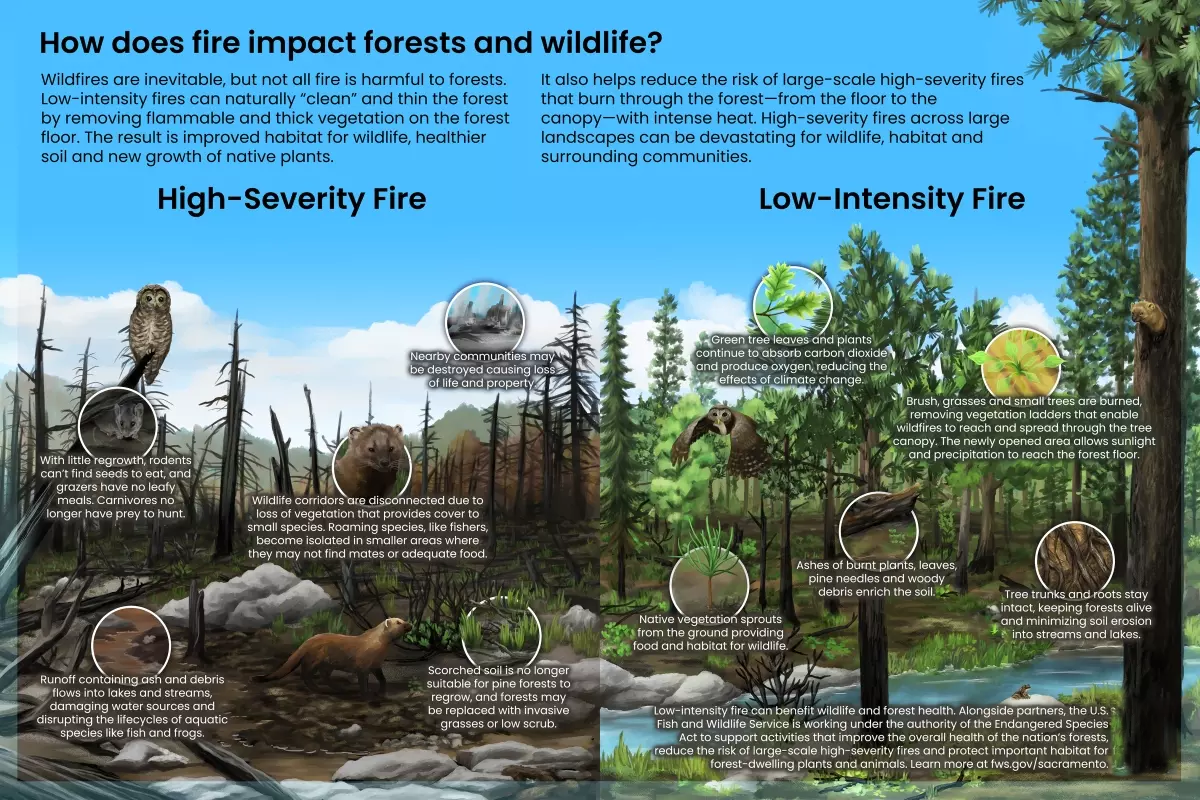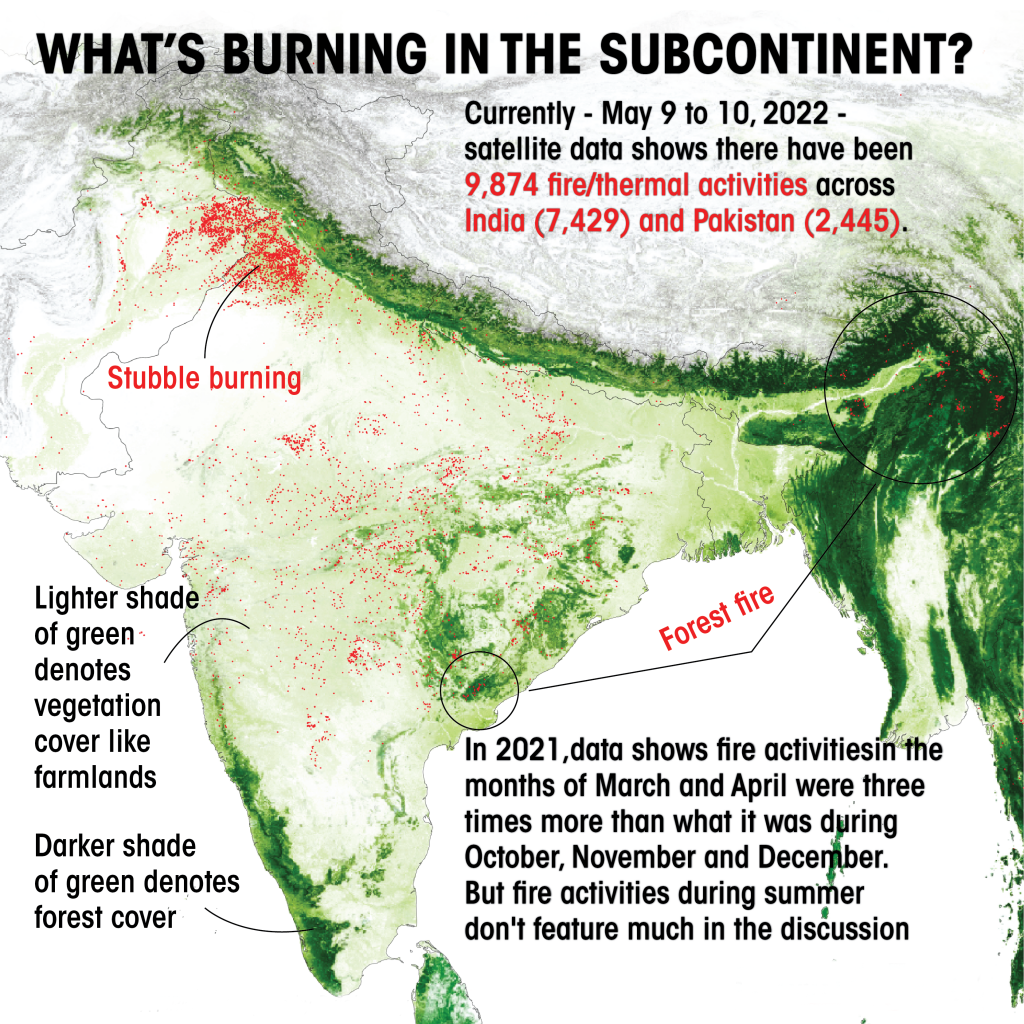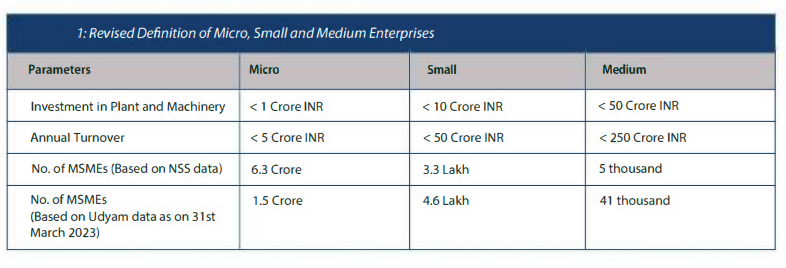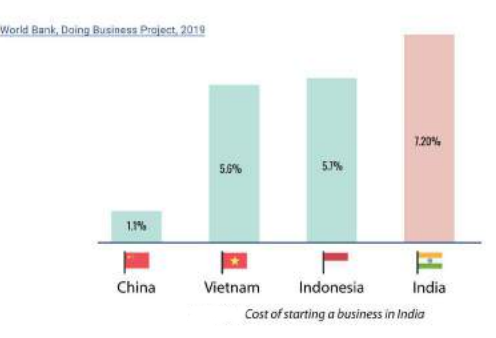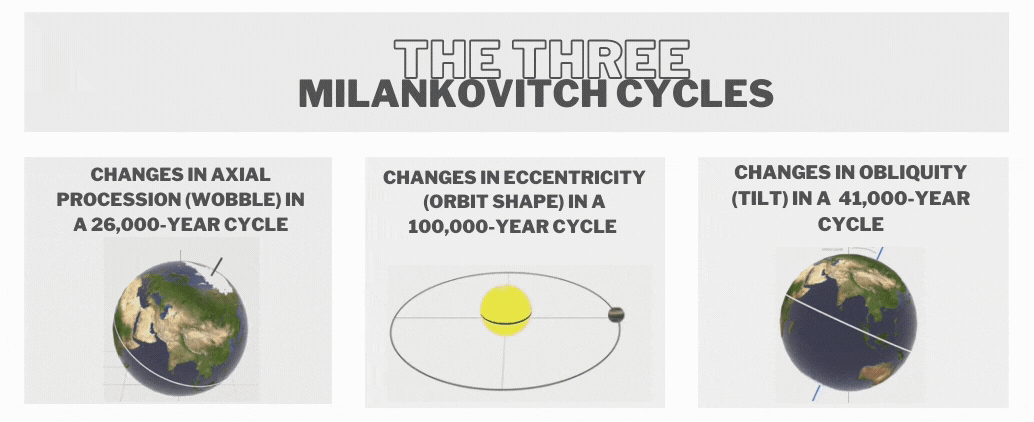Social Justice
India’s Progress in Gender Equality
For Prelims: Human Development Report 2023-24, Gender Inequality Index 2022, Reproductive health, Maternal Mortality Ratio, Gender wage gap, National Family Health Survey-5 report, World Inequality Report 2022, Beti Bachao Beti Padhao, Mahila Shakti Kendra, National Creche Scheme, Pradhan Mantri Matru Vandna Yojna, Pradhan Mantri Awas Yojana, One Stop Centres, Constitution (106th Amendment) Act, 2023.
For Mains: Issues Related to Women in India, Dimensions of Gender Inequality Index 2022.
Why in News?
Recently, the Gender Inequality Index (GII), 2022 has been released by UNDP in their Human Development Report 2023-24.
- In GII, India stands at rank 108th out of 193 countries, with a score of 0.437.
What is the Gender Inequality Index?
- About: GII is a composite metric of gender inequality using three dimensions: reproductive health, empowerment and the labour market.
- It reflects the gap in human development potential due to inequality between female and male achievements in these areas.
- GII values range from 0 (equality) to 1 (extreme inequality).
- A low GII value indicates low inequality between women and men, and vice-versa.
- Dimensions and Indicators:
- India’s Progress:
- India stood at rank 122 out of 191 countries with a score of 0.490 in the Gender Inequality Index 2021.
- The current data shows a significant jump of 14 ranks on GII 2022 vis-a-vis GII 2021.
- Over the last 10 years, India’s rank in GII has become consistently better, indicating progressive improvement in achieving gender equality in the country.
Note
- Maternal Mortality Ratio: Number of deaths due to pregnancy-related causes per 100,000 live births.
- Adolescent Birth Rate: Annual number of births to females aged 10-14 or 15-19 years per 1,000 females in the respective age group.
- Labor Force Participation Rate: Proportion of the working-age population (ages 15 and older) that engages in the labour market, either by working or actively looking for work, expressed as a percentage of the working-age population.
What are the Major Issues Related to Gender Inequality in India?
- Gender-Based Violence: Women and girls in India often face various forms of violence, including domestic violence, sexual harassment, rape, dowry-related violence, and honour killings.
- These issues contribute significantly to the gender inequality landscape.
- Nearly one-third of women in India have experienced physical or sexual violence, according to the National Family Health Survey-5 report.
- Unequal Access to Education: Despite efforts to improve education access, disparities still exist between boys and girls in terms of enrollment, retention, and completion rates.
- Cultural norms, economic constraints, and safety concerns often hinder girls' education.
- Invisible Labour: Women in India often perform a significant amount of unpaid care work, including household chores, childcare, and eldercare, which is often overlooked and undervalued, contributing to their economic dependency and time poverty.
- Gender Wage Gap: Women in India generally earn less than men for similar work, reflecting a significant gender wage gap.
- This gap is prevalent across various sectors and levels of employment.
- According to the estimates of the World Inequality Report 2022, in India, men earn 82% of the labour income, whereas women earn 18% of it.
- Child Marriage: Child marriage disproportionately affects girls, depriving them of educational and economic opportunities and exposing them to health risks.
- According to UNESCO, one in three of the world’s child brides live in India.
- Child brides include girls under 18 who are already married, as well as women of all ages who first married in childhood.
- The prevalence of child marriage has reduced by half from 47% in 2006 to 23.3% during 2019-21 (NFHS-5).
- However, a few States such as Andhra Pradesh, Assam, Bihar, Jharkhand, Rajasthan, Telangana, Tripura and West Bengal have higher prevalence of child marriage than the national average.
- According to UNESCO, one in three of the world’s child brides live in India.
What are the Indian Government Initiatives to Promote Gender Equality?
- Beti Bachao Beti Padhao (BBBP) ensures the protection, survival, and education of the girl child.
- Mahila Shakti Kendra (MSK) aims to empower rural women through skill development and employment opportunities.
- The National Creche Scheme offers safe environments for children, enabling women to pursue employment.
- Pradhan Mantri Matru Vandna Yojna provides maternity benefits to pregnant and lactating mothers.
- Pradhan Mantri Awas Yojana ensures housing under women's names.
- Sukanya Samriddhi Yojna (SSY) economically empowers girls through bank accounts.
- Gender Budget has been made a part of the Union Budget of India since 2005 and entails fund allocation towards programmes/schemes dedicated to women.
- Nirbhaya Fund Framework provides for a non-lapsable corpus fund for the implementation of initiatives aimed at enhancing the safety and security of women in the country.
- One Stop Centres (OSCs) offer integrated services for women victims of violence, including medical aid, legal assistance, and counselling.
- The Constitution (106th Amendment) Act, 2023, reserves one-third of all seats for women in Lok Sabha, State legislative assemblies, and the Legislative Assembly of the National Capital Territory of Delhi, including those reserved for SCs and STs.
- 33% reserved seats in Panchayati Raj Institutions for women are already in place.
- The Vigyan Jyoti programme aims to encourage girls to pursue higher education and careers in STEM (Science, Technology, Engineering and Mathematics), especially in the areas where women's participation is low in order to balance the gender ratio across the streams.
- Other Initiatives like Stand-Up India, Mahila e-Haat, Entrepreneurship and Skill Development Programme (ESSDP), and Pradhan Mantri Mudra Yojana (PMMY) promote women entrepreneurs.
Global Gender Gap Report (World Economic Forum):
- The Global Gender Gap Index annually benchmarks the current state and evolution of gender parity across four key dimensions (Economic Participation and Opportunity, Educational Attainment, Health and Survival, and Political Empowerment).
- It is the longest-standing index, which tracks progress towards closing these gaps over time since its inception in 2006
- India was ranked at 127 out of 146 countries in the Gender Gap Report, 2023.
Way Forward
- Comprehensive Legal Reforms: Strengthening and enforcing existing laws related to gender-based violence, child marriage, and workplace discrimination.
- Introducing provisions related to marital rape in the Bharatiya Nyaya Sanhita as per the recommendations of the Justice Verma Committee (2013).
- Gender-Sensitive Education: Implement gender-sensitive curricula and policies in schools and colleges to promote gender equality, challenge stereotypes, and ensure equal access to quality education for girls.
- Freelancing Platforms: Promoting and facilitating access to freelancing platforms and online marketplaces where housewives can offer their skills and services in areas such as content writing, graphic design, virtual assistance, social media management, and online tutoring.
- Support for Unpaid Care Work: There is a need to recognise and value unpaid care work performed by women and promote shared responsibilities within households. Encourage men's involvement in caregiving and domestic responsibilities.
- Equal Pay and Workplace Policies: Enforcing equal pay for equal work policies, promoting gender diversity in leadership positions, and implementing workplace policies that support work-life balance and safe working environments free from harassment and discrimination.
UPSC Civil Services Examination Previous Year Question (PYQ)
Prelims
Q. Which of the following gives ‘Global Gender Gap Index’ ranking to the countries of the world? (2017)
(a) World Economic Forum
(b) UN Human Rights Council
(c) UN Women
(d) World Health Organization
Ans: (a)
Mains
Q.1 “Empowering women is the key to control population growth”. Discuss. (2019)
Q.2 Discuss the positive and negative effects of globalization on women in India? (2015)
Q.3 Male membership needs to be encouraged in order to make women’s organization free from gender bias. Comment. (2013)
Q.4 Distinguish between ‘care economy’ and ‘monetized economy’. How can the care economy be brought into a monetized economy through women empowerment? (2023)


Indian Polity
S. R. Bommai v. Union of India Case 1994
For Prelims: Article 356, Supreme Court of India, Federalism, Judicial Review
For Mains: Significance of the S.R. Bommai v. Union of India case, President's Rule, Improper Use of Article 356
Why in News?
The S. R. Bommai v. Union of India case, decided by a nine-judge bench of the Supreme Court of India in 1994, restricts the arbitrary dismissal of state governments under Article 356. Celebrating its 30th anniversary, its impact persists in shaping India's constitutional framework.
What is the S. R. Bommai v. Union of India case?
- Background of S. R. Bommai v. Union of India:
- In 1985, the Janata Party won the Assembly elections in Karnataka and formed the government with Chief Minister Ramakrishna Hegde. Hegde was later replaced by SR Bommai in 1988.
- In September 1988 a legislator from the Janata Dal, defected from the party along with 19 other members of the Legislative Assembly, withdrawing support from the Bommai government.
- The state government was dismissed by using Article 356 due to majority loss from defections. Bommai's request to test the majority was denied by the governor.
- Bommai sought relief in the high court, which ruled against him, leading to an appeal to the Supreme Court.
- In 1985, the Janata Party won the Assembly elections in Karnataka and formed the government with Chief Minister Ramakrishna Hegde. Hegde was later replaced by SR Bommai in 1988.
- Supreme Court Judgment:
- A nine-judge bench of the Supreme Court emphasised that the Presidential Proclamation under Article 356 must be exercised with caution, as advocated by Dr. B.R. Ambedkar and recommended by the Sarkaria Commission.
- Both houses of Parliament must thoroughly analyse the Presidential Proclamation as per Article 356(3).
- If the proclamation is issued without the approval of both houses, it lapses within two months, and the state assembly resumes its function.
- The Supreme Court can subject the proclamation to judicial review and entertain writ petitions challenging its legality if they raise arguable questions.
- Clarified that the President's power to dismiss a state government is not absolute but subject to limitations.
- Recognised that while Article 356 does not explicitly address the dissolution of the legislature, such powers can be inferred from it.
- Noted that Article 174(2), allowing the Governor to dissolve the Legislative Assembly, and Article 356(1)(a), enabling the President to confer upon himself the powers of the Governor and the state government, imply the power to dissolve the legislature.
- Significance of S.R. Bommai v. Union of India Case:
- The S.R. Bommai case gives one of the landmark judgment of the Supreme Court regarding the basic structure doctrine as well as recording the misuse of article 356.
- The judgment provided clarity on the scope and limitations of Article 356, emphasising its use only in extraordinary circumstances.
- The principles laid down by the Supreme Court were consistent with the recommendations of the Sarkaria Commission.
- The case affirmed the principles of federalism, stating that state governments are not subordinate to the centre and advocating for cooperative federalism.
- The judgement asserted the role of the judiciary in scrutinising the President's actions under Article 356, ensuring adherence to constitutional principles and preventing misuse of power.
- It affirmed that the floor of the Assembly is the sole authority to test the government's majority, not the subjective opinion of the Governor.
Note
- The Sarkaria Commission advocated for notifying the state before activating Article 356(1) under certain instances.
- It stated that all other options should be first considered to solve the problem and Article 365 should only be used if there is no other option available that can be implemented to solve the problem at hand.
- Cooperative federalism and Competitive federalism:
- In Cooperative federalism the Centre and states share a horizontal relationship, where they “cooperate” in the larger public interest.
- It is an important tool to enable states’ participation in the formulation and implementation of national policies.
- The Union and the states are constitutionally obliged to cooperate with each other on the matters specified in Schedule VII of the Constitution.
- In Competitive federalism the relationship between the Central and state governments is vertical and between state governments is horizontal.
- In Competitive federalism States need to compete among themselves and also with the Centre for benefits.
- States compete with each other to attract funds and investment, which facilitates efficiency in administration and enhances developmental activities.
- In Cooperative federalism the Centre and states share a horizontal relationship, where they “cooperate” in the larger public interest.
What is Article 356 of the Indian Constitution?
- Background of Article 356:
- Initial discussions in the Constituent Assembly deliberated on whether India should adopt a federal or unitary system of government.
- Two schools of thought emerged, with proponents of federalism arguing for decentralised powers and others advocating for a more centralised unitary state.
- Dr. Ambedkar clarified that India operates under both federal and unitary principles, with federalism prevailing under normal circumstances and unitary control during emergencies.
- Despite warnings against misuse, subsequent governments frequently employed Article 356 for political reasons, resulting in its invocation 132 times.
- Initial discussions in the Constituent Assembly deliberated on whether India should adopt a federal or unitary system of government.
- Article 356:
- Article 356 of the Constitution of India is based on Section 93 of the Government of India Act, 1935.
- According to Article 356, the President's Rule can be imposed on any state of India on the grounds of the failure of the constitutional machinery.
- President's Rule can be imposed in two situations: when the President receives a report from the state's Governor or is otherwise convinced that the state government cannot function according to the Constitution (Article 356), and when a state fails to comply with directions from the Union government (Article 365).
- During the President's Rule, the state government is suspended, and the central government directly administers the state through the Governor.
- Parliamentary approval is necessary for imposing the President's Rule, and it should be approved in both Houses of Parliament within two months through a simple majority.
- Initially, the President's Rule is for six months and can be extended for up to three years with parliamentary approval every six months.
- The 44th Amendment to the Constitution (1978) introduced constraints on extending the President's Rule beyond one year, allowing extension only in case of a national emergency or if the Election Commission certifies the necessity due to difficulties in conducting state assembly elections.
- Based on the report of the Sarkaria Commission on Centre-state Relations (1988), the Supreme Court in the Bommai case, 1994, enlisted the situations where the exercise of power under Article 356 could be proper or improper.
| Proper Use of Article 356 | Improper Use of Article 356 |
| Hung Assembly: No party secures a majority after elections. | The Ministry resigns without exploring alternative ministry formation. |
| The majority party declines to form a ministry, and no coalition ministry with a majority is available. | Governor imposes President's Rule without allowing majority test. |
| The Ministry resigns after defeat in the assembly, and no party can form a new ministry with a majority. | The ruling party suffers a significant defeat in the Lok Sabha elections. |
| Internal subversion or deliberate violation of the Constitution. | Internal disturbances not amount to subversion or breakdown. |
| The state government disregards the constitutional direction of the Central government. | Allegations of maladministration or corruption without proper warning. |
| Physical breakdown, endangering state security. | Misuse for intraparty issues or irrelevant purposes. |
| The state government is not given prior warning, except in emergencies. |
UPSC Civil Services Examination, Previous Year Questions (PYQs)
Q. Which of the following are not necessarily the consequences of the proclamation of the President’s rule in a State? (2017)
- Dissolution of the State Legislative Assembly
- Removal of the Council of Ministers in the State
- Dissolution of the local bodies
Select the correct answer using the code given below:
(a) 1 and 2 only
(b) 1 and 3 only
(c) 2 and 3 only
(d) 1, 2 and 3
Ans: (b)
Mains:
Q. Though the federal principle is dominant in our constitution and that principle is one of its basic features, but it is equally true that federalism under the Indian Constitution leans in favour of a strong Center, a feature that militates against the concept of strong federalism. Discuss. (2014)

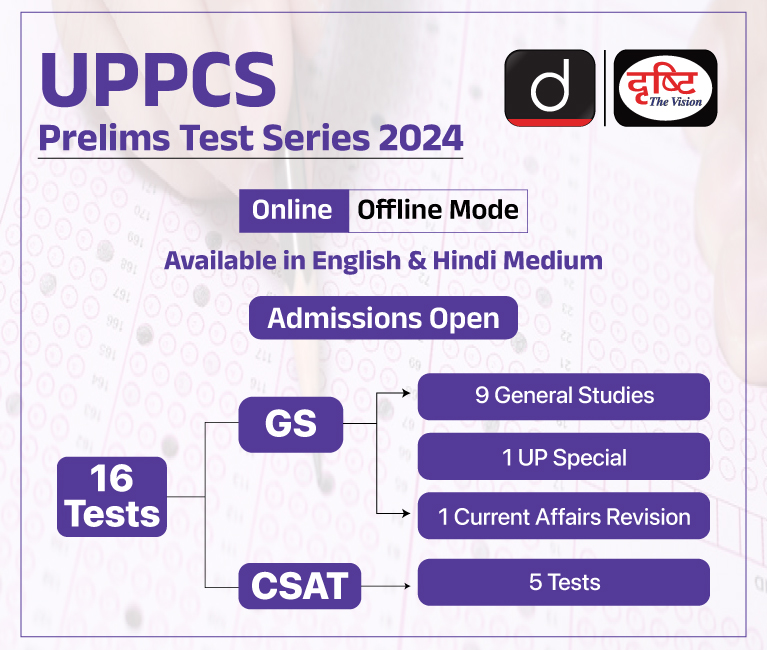
Biodiversity & Environment
Forest Fires
For Prelims: Forest Fires, Bambi Bucket, India State of Forest Report (ISFR), Forest Survey of India (FSI), The Forest Fire Prevention and Management Scheme (FPM).
For Mains: Forest Fires, Environment Pollution and Degradation.
Why in News?
Recently, Forest Fires have been raging in the Coonoor forest range in the Nilgiris in Tamil Nadu.
- The Indian Air Force joined the ongoing firefighting efforts of the state forest department, deploying a Mi-17 V5 helicopter to conduct multiple “Bambi Bucket” operations.
Note
The Bambi Bucket, also called a helicopter bucket or a helibucket, is a specialised container that is suspended by cable under a chopper, and which can be filled by lowering into a river or pond before being flown above a fire and discharged aerially by opening a valve at the bottom of the bucket.
- The Bambi Bucket is especially helpful in fighting wildfires that are difficult or impossible to reach from the ground. Around the world, helicopters are frequently commissioned to fight forest fires.
What is a Forest Fire?
- About:
- Also called bush or vegetation fire or wildfire, it can be described as any uncontrolled and non-prescribed combustion or burning of plants in a natural setting such as a forest, grassland, brushland or tundra, which consumes the natural fuels and spreads based on environmental conditions (e.g., wind, topography).
- A wildfire requires three essential elements to sustain combustion like Fuel, Oxygen, and a Heat source.
- Classification:
- Surface Fire: A forest fire may burn primarily as a surface fire, spreading along the ground as the surface litter (senescent leaves and twigs and dry grasses etc) on the forest floor and is engulfed by the spreading flames.
- Underground Fire/Zombie Fire: The fires of low intensity, consuming the organic matter beneath and the surface litter of the forest floor are sub-grouped as underground fires. In most of the dense forests, a thick mantle of organic matter is found on top of the mineral soil.
- These fires usually spread entirely underground and burn for some meters below the surface.
- This fire spreads very slowly and in most cases it becomes very hard to detect and control such types of fires.
- They may continue to burn for months and destroy the vegetative cover of the soil.
- Canopy or Crown Fires: These occur when fire spreads through the upper canopy of trees, often fueled by high winds and dry conditions. They can be particularly intense and difficult to control.
- Controlled Deliberate Fires: In some cases, controlled deliberate fires, also known as prescribed burns or bushfires, are intentionally set by forest management agencies to reduce fuel loads, mitigate the risk of uncontrolled wildfires, and promote ecosystem health.
- These controlled burns are carefully planned and executed under specific conditions to minimize risks and maximize benefits to the forest ecosystem.
- Government Initiatives:
- National Action Plan for Forest Fires (NAPFF), was started in 2018 with the goal of reducing forest fires by informing, enabling, and empowering forest fringe communities and incentivizing them to collaborate with state forest departments.
- The Forest Fire Prevention and Management Scheme (FPM) is the only government-sponsored programme dedicated to assisting states in dealing with forest fires.
How Common are Forest Fires in India?
- Forest Fire Season:
- November to June is considered to be forest fire season in India, with hundreds of thousands of small and large fires burning every year, especially from February onward as summer approaches.
- April-May are usually the worst fire months across the country.
- The biennial India State of Forest Report (ISFR) published by the Forest Survey of India (FSI) in its 2021 report, shows that the total Fire-prone forest area is 35.47% of the forest cover.
- November to June is considered to be forest fire season in India, with hundreds of thousands of small and large fires burning every year, especially from February onward as summer approaches.
- Regions:
- Severe fires break out in dry deciduous forests, while evergreen, semi-evergreen, and montane temperate forests are comparatively less prone to fires.
- The forests of Northeast India, Odisha, Maharashtra, Jharkhand, Chhattisgarh, and Uttarakhand are the most vulnerable to fires during the November to June period.
- In 2021, a series of forest fires broke out in Uttarakhand, Himachal Pradesh, Nagaland-Manipur border, Odisha, Madhya Pradesh, and Gujarat, including in wildlife sanctuaries.
- Present Scenario (2024):
- The highest number of forest fires have been reported from Mizoram (3,738), Manipur (1,702), Assam (1,652), Meghalaya (1,252), and Maharashtra (1,215), as per FSI data.
- Satellite data of Indian Space Research Organisation (ISRO) tools, showed that forest fires have been on an uptick since early March 2024 along the Konkan belt in Maharashtra, south-coastal Gujarat along Gir Somnath and Porbandar, southern Rajasthan and adjoining south-western districts of Madhya Pradesh, coastal and interior Odisha, and adjoining Jharkhand.
- In South India, most forest-covered areas of Andhra Pradesh, Karnataka and Tamil Nadu have seen fire incidents over the past week.
What is the Reason for the Forest Fires?
- Human Carelessness:
- A majority of forest fires are caused by human activities such as discarded cigarettes, campfires, burning of debris, and other similar processes.
- With increasing urbanisation and human presence in forested areas, the risk of accidental fires also increases.
- Usually, poachers and illegal smugglers set fires either to divert the attention of forest officials or to eliminate evidence of their crimes.
- Weather Conditions:
- The exceptionally hot and dry weather conditions experienced in southern India, particularly during the early phase of the summer season, have created a conducive environment for the spread of forest fires.
- High temperatures, low humidity, and calm winds increase the likelihood of fires igniting and spreading rapidly.
- Aridity:
- Southern India has experienced above-normal temperatures, clear sky conditions, and a lack of rainfall, leading to increased aridity.
- This dries out vegetation, making it more susceptible to ignition and facilitating the rapid spread of fires.
- Early Availability of Dry Biomass:
- The above-normal temperatures experienced in the months leading up to the summer season have resulted in an early availability of dry biomass in forests.
- This dry vegetation, including the leaves of chir forests, is particularly prone to igniting and spreading fires.
- The high flammability of chir forest leaves raises the chances of forest fires and adds to their intensity and rapid spread.
What can be Done to Mitigate Forest Fire?
- Public Awareness and Education:
- Educating the public about the causes and consequences of forest fires, as well as promoting responsible behaviour in forests, can help reduce the incidence of human-caused fires.
- Campaigns on fire safety, proper disposal of cigarettes, and the dangers of leaving campfires unattended can raise awareness and encourage responsible behaviour.
- Strict Enforcement of Regulations:
- Enforcing laws and regulations related to forest fire prevention, such as restrictions on burning debris and campfire bans during dry periods, can help reduce the risk of accidental fires.
- Penalties for violating fire safety regulations should be strictly enforced to deter irresponsible behaviour.
- Enforcing laws and regulations related to forest fire prevention, such as restrictions on burning debris and campfire bans during dry periods, can help reduce the risk of accidental fires.
- Firebreaks and Fuel Management:
- Creating firebreaks and conducting controlled burns to remove excess vegetation can help reduce the spread of fires by creating barriers and reducing fuel loads.
- Proper fuel management practices, such as thinning dense vegetation and clearing deadwood, can also make forests more resilient to fires.
- Creating firebreaks and conducting controlled burns to remove excess vegetation can help reduce the spread of fires by creating barriers and reducing fuel loads.
- Early Detection Systems:
- Implementing early detection systems, such as surveillance cameras, satellite monitoring, and lookout towers, can help detect fires in their early stages when they are easier to contain.
- Rapid detection allows for a quicker response, minimizing the size and impact of fires.
- Implementing early detection systems, such as surveillance cameras, satellite monitoring, and lookout towers, can help detect fires in their early stages when they are easier to contain.
Conclusion
- A combination of human activities, natural factors like weather conditions and aridity, and the early availability of dry biomass has contributed to the heightened risk and incidence of forest fires in southern India this year 2024.
- By implementing mitigating strategies and fostering a culture of fire safety and resilience, communities can work together to mitigate the risk and impact of forest fires.
UPSC Civil Services Examination Previous Year Question (PYQ)
Prelims
Q. Consider the following: (2019)
- Carbon monoxide
- Methane
- Ozone
- Sulphur dioxide
Which of the above are released into atmosphere due to the burning of crop/biomass residue?
(a) 1 and 2 only
(b) 2, 3 and 4 only
(c) 1 and 4 only
(d) 1, 2, 3 and 4
Ans: (d)
- Biomass is organic material that comes from plants and animals, and it is a renewable source of energy. Biomass contains stored energy from the Sun. Plants absorb the Sun’s energy in a process called photosynthesis. When biomass is burned, the chemical energy in biomass is released as heat.
- Crop residue and biomass burning (forest fires) is considered as a major source of Carbon Dioxide (CO2 ), Carbon Monoxide (CO), Methane (CH4 ), volatile organic compounds (VOC), and Nitrogen Oxides (NOX). Burning of rice crop residue releases Suspended Particulate Matter, SO2, NO2 and O3 in the atmosphere. Therefore, option (d) is the correct answer
Mains:
Q. Most of the unusual climatic happenings are explained as an outcome of the El-Nino effect. Do you agree? (2014)


Indian Economy
Boosting Exports from MSMEs: NITI Aayog
For Prelims: Boosting Exports from MSMEs: NITI Aayog, Exporter on Record (EOR) and Seller on Record (SOR), Rising and Accelerating MSME Performance (RAMP) Scheme.
For Mains: Boosting Exports from MSMEs: NITI Aayog, Indian Economy and issues relating to planning, mobilisation of resources, growth, development and employment.
Why in News?
Recently, the NITI Aayog released a report titled Boosting Exports from MSMEs, which recommends that the government must make it easier for smaller firms to export their goods through e-commerce platforms.
What are the Key Recommendations of the Report?
- Single Information Portal for Exporters:
- Niti Aayog recommends the creation of a single information portal for exporters, leveraging AI-based interfaces to provide comprehensive and up-to-date information on market tariffs, paperwork requirements, finance sources, service providers, incentives, and potential customers.
- It recommended establishing a comprehensive National Trade Portal (NTN) to streamline the export process for MSMEs, facilitating seamless operations and competitive advantage.
- Niti Aayog recommends the creation of a single information portal for exporters, leveraging AI-based interfaces to provide comprehensive and up-to-date information on market tariffs, paperwork requirements, finance sources, service providers, incentives, and potential customers.
- Annual Financial Reconciliation Process:
- The report suggests introducing an annual financial reconciliation process for e-commerce exporters and exemptions on import duties for rejects or returns. It also proposes creating a green channel clearance for e-commerce exports.
- Distinction Between Exporter on Record (EOR) and Seller on Record (SOR):
- To boost e-commerce exports, the report suggests distinguishing between EOR and SOR and allowing a reduction in invoice value without a percentage ceiling for all e-commerce exports.
- EOR refers to the party or entity that is officially recognised as the exporter of goods in an international transaction. The EOR is responsible for complying with all export regulations, documentation, and customs requirements of the exporting country.
- SOR refers to the party or entity that is legally recognised as the seller in a commercial transaction. The SOR is responsible for selling the goods to the buyer and may handle tasks such as negotiating the terms of sale, preparing invoices, arranging for shipping and delivery, and ensuring that the goods meet the agreed-upon specifications.
- To boost e-commerce exports, the report suggests distinguishing between EOR and SOR and allowing a reduction in invoice value without a percentage ceiling for all e-commerce exports.
- Promotion of Export Credit Guarantee:
- Access to finance is highlighted as a significant bottleneck for MSMEs. The report recommends promoting the Export Credit Guarantee to improve working capital availability, suggesting that the government create an incentive package to increase uptake from the current 10% to 50% or more.
- Easing Merchandise Exports for MSMEs:
- Suggestions include the relaxation of compliance requirements for MSMEs for a limited period and implementing a time-bound disbursement process for incentives to prevent the blocking of working capital.
- Identification of Export Opportunities in Specific Sectors:
- The report identifies various sectors where Indian MSMEs can compete in export markets, such as handicrafts, handloom textiles, ayurveda, herbal supplements, leather goods, imitation jewellery, and wooden products. It emphasises the substantial global market potential exceeding USD 340 billion for these sectors.
What is the Current Scenario of the MSME Sector in India?
- MSME Contribution to the Economy:
- The report highlights the significant contribution of MSMEs to India's economy, accounting for over 11 crore jobs and around 27% of GDP (Gross Domestic Product).
- Rapid Growth in MSME Establishment:
- Between the financial year (FY) 2019 and FY 2021, India saw a significant increase in the establishment of new MSME units, with around 40 lakh new MSMEs being established. This growth is particularly notable in micro-enterprises.
- Currently, around 38% of the total 54 lakh MSME units are engaged in manufacturing, with small and medium enterprises largely contributing to manufacturing activity suitable for export.
- The top five states with the highest concentration of manufacturing MSMEs are Uttar Pradesh, Maharashtra, Tamil Nadu, Karnataka, and Gujarat.
- Export Potential:
- Exporting is crucial for Indian MSMEs to unlock growth potential. However, India's share of global exports of low-skilled manufacturing products is only 5%, despite having a large working-age population and significant employment in manufacturing MSMEs.
- Despite the potential for exporting, only a small percentage of MSMEs engage in it, with many having annual turnover from exports of less than Rs 1 crore.
- Exporting is crucial for Indian MSMEs to unlock growth potential. However, India's share of global exports of low-skilled manufacturing products is only 5%, despite having a large working-age population and significant employment in manufacturing MSMEs.
What is MSME?
- MSMEs form the backbone of the Indian economy, contributing significantly to employment generation, industrial production, and overall economic growth.
- These enterprises are engaged in the production, manufacturing, processing, or preservation of goods and commodities.
- They account for 38.4% of the total manufacturing output and contribute 45.03% of the country's total exports.
What are the Current Challenges Related to the MSME Sector in India?
- Financial Constraint:
- In the Indian economy, access to finance has always been an issue for smaller firms and businesses. This is a major hindrance for businesses as well as the MSME sector.
- However, the most disturbing fact about it is that only 16% of SMEs get access to timely finance, resulting in small and medium firms being forced to rely on their resources.
- Lack of Innovation:
- Indian MSMEs lack innovation, and the majority of the products that they produce are based on outdated technologies. There is a severe lack of entrepreneurs in this sector, which has prevented it from adopting new technologies and tools.
- Consequently, MSMEs have faced challenges stemming from outdated technology and lower productivity levels, particularly in comparison to larger firms.
- Majority of Small Firms:
- Micro and small businesses account for more than 80% of MSMEs. Therefore, due to communication gaps and awareness, they cannot take advantage of the government's emergency line of credit, stressed asset relief, equity participation, and fund of funds operation.
- Lack of Formalisation amongst MSMEs:
- MSMEs lack formalisation and this contributes to the credit gap.
- Almost 86% of manufacturing MSMEs in the country are unregistered. Even today, only about 1.1 crore MSMEs are registered with the Goods and Services Tax.
What are the Government Initiatives Related to MSMEs?
- Raising and Accelerating MSME Performance (RAMP) Scheme
- Credit Guarantee Trust Fund for Micro & Small Enterprises (CGTMSE)
- Interest Subsidy Eligibility Certificate (ISEC)
- A Scheme for Promoting Innovation, Rural Industry & Entrepreneurship (ASPIRE)
- Credit Linked Capital Subsidy for Technology Upgradation (CLCSS)
- Zero Defect & Zero Effect (ZED)
Conclusion
- While the MSME sector in India is vital for employment generation and economic growth, there are challenges such as limited export participation and regulatory constraints that need to be addressed to unlock its full potential.
UPSC Civil Services Examination, Previous Year Question:(PYQ)
Prelims:
Q.1 What is/are the recent policy initiative(s)of Government of India to promote the growth of the manufacturing sector? (2012)
- Setting up of National Investment and Manufacturing Zones
- Providing the benefit of ‘single window clearance’
- Establishing the Technology Acquisition and Development Fund
Select the correct answer using the codes given below:
(a) 1 only
(b) 2 and 3 only
(c) 1 and 3 only
(d) 1, 2 and 3
Ans: (d)
Q.2. Which of the following can aid in furthering the Government’s objective of inclusive growth? (2011)
- Promoting Self-Help Groups
- Promoting Micro, Small and Medium Enterprises
- Implementing the Right to Education Act
Select the correct answer using the codes given below:
(a) 1 only
(b) 1 and 2 only
(c) 2 and 3 only
(d) 1, 2 and 3
Ans: (d)
Q3. Consider the following statements with reference to India : (2023)
- According to the ‘Micro, Small and Medium Enterprises Development (MSMED) Act, 2006, the ‘medium enterprises’ are those with investments in plant and machinery between `15 crore and `25 crore.
- All bank loans to the Micro, Small and Medium Enterprises qualify under the priority sector.
Which of the statements given above is/are correct?
(a) 1 only
(b) 2 only
(c) Both 1 and 2
(d) Neither 1 nor 2
Ans: (b)
Mains
Q.1 “Industrial growth rate has lagged behind in the overall growth of Gross-Domestic-Product(GDP) in the post-reform period” Give reasons. How far are the recent changes in Industrial Policy capable of increasing the industrial growth rate? (2017)
Q.2 Normally countries shift from agriculture to industry and then later to services, but India shifted directly from agriculture to services. What are the reasons for the huge growth of services vis-a-vis the industry in the country? Can India become a developed country without a strong industrial base? (2014)


Important Facts For Prelims
Astronomical Grand Cycles
Why in News?
A recent study published in the journal Nature Communications has found evidence of erosion in the deep sea linking astronomical grand cycles with the orbits of Earth and Mars, and global warming or cooling.
What are the Key Findings of the Study?
- Astronomical Grand Cycles:
- Geological sedimentary evidence in the deep sea has revealed a newly discovered 2.4-million-year cycle, known as "astronomical grand cycles," linked with the orbits of Earth and Mars.
- The cycle influences global warming or cooling trends and has been detected through erosion patterns in deep-sea sedimentary data.
- Connection Between Mars' Orbit and Earth's Climate:
- The gravity fields of planets in the solar system interfere with each other, leading to changes in their orbital eccentricity (how circular their orbits are).
- The interaction between Earth and Mars' orbits causes variations in the amount of solar radiation received by Earth, resulting in cycles of warming and cooling over 2.4 million years.
- The gravity fields of planets in the solar system interfere with each other, leading to changes in their orbital eccentricity (how circular their orbits are).
- Impact on Climate and Ocean Circulation:
- The vigorous deep-sea circulation driven by eddies (a circular current of water) during warmer cycles could potentially prevent ocean stagnation, even if the Atlantic Meridional Overturning Circulation (AMOC) slows or stops functioning.
- AMOC is a large system of ocean currents that carry warm water from the tropics northwards into the North Atlantic.
- Deep ocean eddies could help provide oxygen to the deep ocean and draw carbon dioxide from the atmosphere into the ocean in a warmer world.
- Intense deep-ocean eddies, described as giant whirlpools, play a vital role in ocean circulation dynamics, these sit at depths of 3,000 to 6,500 meters and where sunlight doesn’t penetrate.
- These eddies contribute to seafloor erosion and the formation of large sediment accumulations known as contourites, resembling snowdrifts in their structure.
- The vigorous deep-sea circulation driven by eddies (a circular current of water) during warmer cycles could potentially prevent ocean stagnation, even if the Atlantic Meridional Overturning Circulation (AMOC) slows or stops functioning.
- Future Research Directions:
- The team plans to gather more data showcasing cycles driven by Earth-Mars interaction, further exploring the dynamics of Earth's climate fluctuations over millions of years.
What are Astronomical Cycles?
- Astronomical cycles refer to periodic variations in the Earth's orbit and orientation towards the Sun that impact the amount of solar radiation received by our planet over long periods.
- These cycles are caused by the gravitational forces between the Earth, Sun, and other planets in the solar system.
- These cycles were first theorised by Serbian scientist Milutin Milankovitch in the 1920s to explain the cyclical patterns of ice ages on Earth also called Milankovitch cycles, or Milankovitch oscillations.
- Some key astronomical cycles include
- Eccentricity (100,000 years) - Changes in the elliptical shape of Earth's orbit around the Sun.
- Obliquity (41,000 years) - Variations in the tilt of Earth's axis relative to its orbital plane.
- Precession (23,000 years) - The shifting orientation of Earth's axis over time.
- Some key astronomical cycles include
What are the Other Astronomical Influences on Earth's Climate?
- Sunspot Activity:
- Sunspots are dark and cooler patches on the sun that increase and decrease in a cyclical manner.
- The number and intensity of sunspots increase and decrease in a cyclical pattern, typically over an 11-year solar cycle.
- According to some meteorologists, higher sunspot activity and numbers are associated with:
- Cooler and wetter weather patterns on Earth and increased storminess and cloud cover.
- Conversely, periods with fewer sunspots are linked to Warmer and drier conditions globally.
- However, these correlations between sunspot activity and specific weather patterns are not consistently supported by statistically significant evidence.
- Sunspots are dark and cooler patches on the sun that increase and decrease in a cyclical manner.
- Galactic Cosmic Rays:
- Some studies suggest that increased cosmic ray flux from our galaxy could influence cloud formation on Earth, potentially leading to cooling effects.
- However, the magnitude of this effect and the mechanisms involved are still subjects of ongoing research.
- Some studies suggest that increased cosmic ray flux from our galaxy could influence cloud formation on Earth, potentially leading to cooling effects.
- Asteroid/Comet Impacts:
- Major asteroid or comet impacts on Earth, while extremely rare, can inject massive amounts of dust and gasses into the atmosphere, leading to temporary cooling periods.
- The Cretaceous-Paleogene extinction (caused extinction of dinosaurs) around 66 million years ago is thought to have been caused in part by an asteroid impact and associated climate changes.
UPSC Civil Services Examination Previous Year Question (PYQ)
Prelims
Q. Variations in the length of daytime and nighttime from season to season are due to (2013)
(a) the earth’s rotation on its axis
(b) the earth’s revolution around the sun in an elliptical manner
(c) the latitudinal position of the place
(d) revolution of the earth on a tilted axis
Ans: (d)


Important Facts For Prelims
NABARD to Launch Fund for Agri-startups
Why in News?
The National Bank for Agriculture and Rural Development (NABARD) plans to introduce a Rs. 1,000-crore fund to support technology-driven agricultural startups and rural enterprises, with an additional Rs. 750 crore earmarked for pre-seed investments in untested ideas, emphasising the need to foster innovative solutions.
- It aims to redirect agricultural funding from traditional farmers to new players with innovative technologies, aiming to shift focus from production credit to investment credit.
What are the Agri Startups and Associated Challenges?
- About:
- An agricultural startup, or agri startup, is a young company or business venture that focuses on developing innovative solutions, technologies, or business models to address challenges and improve efficiency in the agricultural sector.
- Services Offered by Agritech Startups:
- Smart Agriculture Promotion: Providing information on crop yields, rainfall patterns, pest infestation, and soil nutrition.
- Farming as a Service: For example, EM3 Agri Services offers farming services and machinery rentals to farmers on a pay-for-use basis.
- Big Data Analytics: Developing farm-specific, data-driven diagnostics to enhance soil and crop health, thereby increasing productivity and farmer income. This often involves the use of Artificial Intelligence, among other technologies.
- Challenges:
- Business Model: Agri-startups often prioritise independent production and marketing, neglecting broader value chain challenges, and hindering scaling beyond initial success.
- Lack of Seed Fund: Agri-startups from modest beginnings require funding and mentorship to validate ideas, develop minimum viable product (MVP), and create viable business plans, making small grant opportunities insufficient.
- Incubators’ Competence: Agribusiness incubators, based in agricultural universities and research institutions, are in the early stages and need a network of professionals with diverse expertise.
- Limited Knowledge of Available Technology: Budding entrepreneurs lack awareness or connection to commercially viable agricultural technologies, including digital ones, offered by research organisations.
- Other Initiatives by the Government:
Nabventures: Fund for Rural Agriculture Startup
- About:
- The government plans to launch a Rs 750 crore Blended Capital fund to support agricultural start-ups and rural enterprises, aiming to enhance investments and efficiency in the sector.
- According to the Organisation for Economic Co-operation and Development (OECD), blended finance is the strategic use of development finance for the mobilisation of additional finance towards sustainable development in developing countries.
- Objective:
- The goal is to support pre-seed startups with unproven ideas or uncertain growth potential, particularly those hindered by insufficient equity for scaling.
- Start-ups that fall under agritech, animal husbandry, fisheries, food processing, and biotechnology would benefit from it.
- Supervision:
- To finance agri-based start-ups and rural enterprises, blended capital support will be rolled out by the Ministry of Agriculture and managed by Nabventures, a wholly-owned subsidiary of NABARD.
- The government plans to launch a Rs 750 crore Blended Capital fund to support agricultural start-ups and rural enterprises, aiming to enhance investments and efficiency in the sector.
Read More: National Bank for Agriculture and Rural Development (NABARD), AgriTech and Agri-Startups
UPSC Civil Services Examination, Previous Year Question (PYQ)
Prelims:
Q. Which of the following grants/grant direct credit assistance to rural households? (2013)
- Regional Rural Banks
- National Bank for Agriculture and Rural Development
- Land Development Banks
Select the correct answer using the codes given below:
(a) 1 and 2 only
(b) 2 only
(c) 1 and 3 only
(d) 1, 2 and 3
Ans: (c)
Mains:
Q. “In the villages itself no form of credit organization will be suitable except the cooperative society.” –All India Rural Credit Survey. Discuss this statement in the background of agricultural finance in India. What constraints and challenges do financial institutions supplying agricultural finance face? How can technology be used to better reach and serve rural clients? (2014)


Rapid Fire
NATO’s DIANA Program
Recently, the Defence Innovation Accelerator for the North Atlantic (DIANA) initiative board approved a proposal to establish an accelerator and two test centres in Finland, with a mission to foster technology, innovation, and business development for both civil and defence purposes.
- DIANA is a North Atlantic Treaty Organization (NATO) established organization to accelerate dual-use innovation capacity across the Alliance. It provides companies with resources, networks, and guidance to develop deep technologies for critical defence and security challenges.
- All NATO nations are members of DIANA. The DIANA Board of Directors is responsible for governance and comprises representatives from every Allied country.
Read more: North Atlantic Treaty Organization (NATO)


Rapid Fire
India and Brazil hold First Inaugural ‘2+2’ Dialogue
India and Brazil conducted their first-ever '2+2' defence and foreign ministerial dialogue, discussing cooperation in key areas.
- The talks focused on expanding cooperation in various areas, including energy, critical minerals, technology, and counter-terrorism.
- The '2+2' defence and foreign ministerial dialogue involves the participation of the defence and foreign ministers of two countries, along with their respective counterparts, to discuss strategic and security-related issues, as well as diplomatic matters.
- India conducts '2+2' dialogues with key strategic partners: the US, Australia, Japan, and Russia. The US holds the oldest and most significant '2+2' talks partnership with India.
Read more: India-Brazil Relations, India-US 2+2 Ministerial Dialogue, India-Australia 2+2 Ministerial Dialogue


Rapid Fire
HbA1C Test
India faces a significant diabetes burden, accounting for 17% of global cases. The Haemoglobin A1C (HbA1C) test, also known as the glycated haemoglobin or glycosylated haemoglobin test, plays a crucial role in early detection and management.
- The HbA1C test provides a 2-3 month average of blood glucose levels by measuring sugar-coated red blood cells, offering comprehensive long-term control assessment.
- Unlike fasting and post-meal tests, it remains unaffected by recent meals, ensuring reliability.
- An Hb1A1C below 5.7% is considered normal; between 5.7 and 6.4% may indicate you are pre-diabetic; and 6.5% or higher can indicate diabetes.
- Factors such as kidney or liver failure, anaemia, certain medications, and pregnancy can influence the test results.
- India has 10.13 crore people with diabetes and 13.6 crore pre-diabetic individuals. Over 35% of Indians suffer from hypertension and nearly 40% from abdominal obesity, both risk factors for diabetes.
- The test is not a standalone diagnostic tool and may be used alongside other tests for a comprehensive assessment.
Read more: Detection of Pre-Diabetes, Coping with Type-1 Diabetes


Rapid Fire
SAKHI: Enhancing Astronaut Capabilities for Gaganyaan Mission
The Vikram Sarabhai Space Centre (VSSC), under the Indian Space Research Organisation (ISRO), has developed an innovative and versatile application called the Space-borne Assistant and Knowledge Hub for Crew Interaction (SAKHI) to support astronauts during the Gaganyaan space flight mission.
- SAKHI offers access to technical information, facilitates communication, monitors health, ensures connectivity with Earth and onboard systems, and manages dietary schedules.
- Strapped to space suits, SAKHI helps astronauts access data, maintain logs, and stay informed about their well-being, enhancing safety and efficiency for the Gaganyaan mission and aligning with ISRO's goal of advancing space exploration.
Read more: Gaganyaan


Rapid Fire
Tiger Triumph
Recently, the joint India-U.S. tri-service Humanitarian Assistance and Disaster Relief (HADR) Exercise, Tiger Triumph, commenced on the Eastern seaboard.
- The primary objective of the exercise is to enhance interoperability for conducting HADR operations and refine Standard Operating Procedures (SOPs) to facilitate swift and effective coordination between the armed forces of both countries.
- This exercise includes ships with helicopters and landing crafts, Indian Navy aircraft, Indian Army personnel and vehicles, Indian Air Force aircraft and helicopters, and the Rapid Action Medical Team (RAMT).
- Other Exercises Between India and US are-
Read more: India-US Relations




